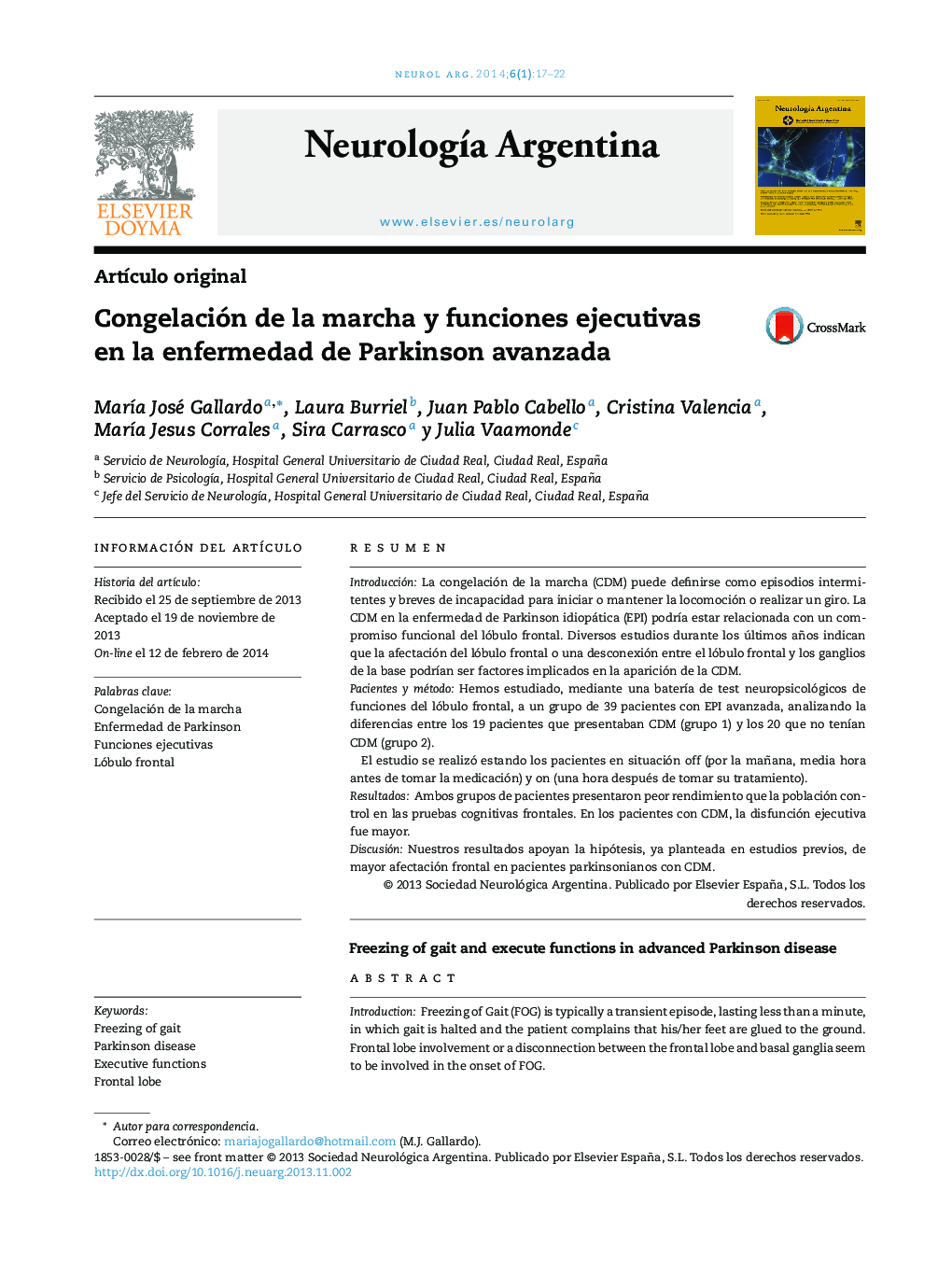| Article ID | Journal | Published Year | Pages | File Type |
|---|---|---|---|---|
| 3076791 | Neurología Argentina | 2014 | 6 Pages |
ResumenIntroducciónLa congelación de la marcha (CDM) puede definirse como episodios intermitentes y breves de incapacidad para iniciar o mantener la locomoción o realizar un giro. La CDM en la enfermedad de Parkinson idiopática (EPI) podría estar relacionada con un compromiso funcional del lóbulo frontal. Diversos estudios durante los últimos años indican que la afectación del lóbulo frontal o una desconexión entre el lóbulo frontal y los ganglios de la base podrían ser factores implicados en la aparición de la CDM.Pacientes y métodoHemos estudiado, mediante una batería de test neuropsicológicos de funciones del lóbulo frontal, a un grupo de 39 pacientes con EPI avanzada, analizando la diferencias entre los 19 pacientes que presentaban CDM (grupo 1) y los 20 que no tenían CDM (grupo 2).El estudio se realizó estando los pacientes en situación off (por la mañana, media hora antes de tomar la medicación) y on (una hora después de tomar su tratamiento).ResultadosAmbos grupos de pacientes presentaron peor rendimiento que la población control en las pruebas cognitivas frontales. En los pacientes con CDM, la disfunción ejecutiva fue mayor.DiscusiónNuestros resultados apoyan la hipótesis, ya planteada en estudios previos, de mayor afectación frontal en pacientes parkinsonianos con CDM.
IntroductionFreezing of Gait (FOG) is typically a transient episode, lasting less than a minute, in which gait is halted and the patient complains that his/her feet are glued to the ground. Frontal lobe involvement or a disconnection between the frontal lobe and basal ganglia seem to be involved in the onset of FOG.Patients and methodWe studied 39 patients with advanced PD, 19 of them presenting FOG and 20 without suffering such episodes. Patients were assessed with a frontal functions tests battery. We analyzed the differences between both groups (with and without FOG). For that purpose patients were studied in an off-state (in the morning, and half an hour before taking the medication) and in an on-state (one hour after having their treatment).ResultsWe found worse results in both groups in executive tests compared with normal population. Patients with FOG had worse results in executive function test.DiscussionPatients with FOG had worse results in dorsolateral frontal functions, presents a frontal cortical component stronger than patients without FOG, as has been described in the literature in recent articles.
